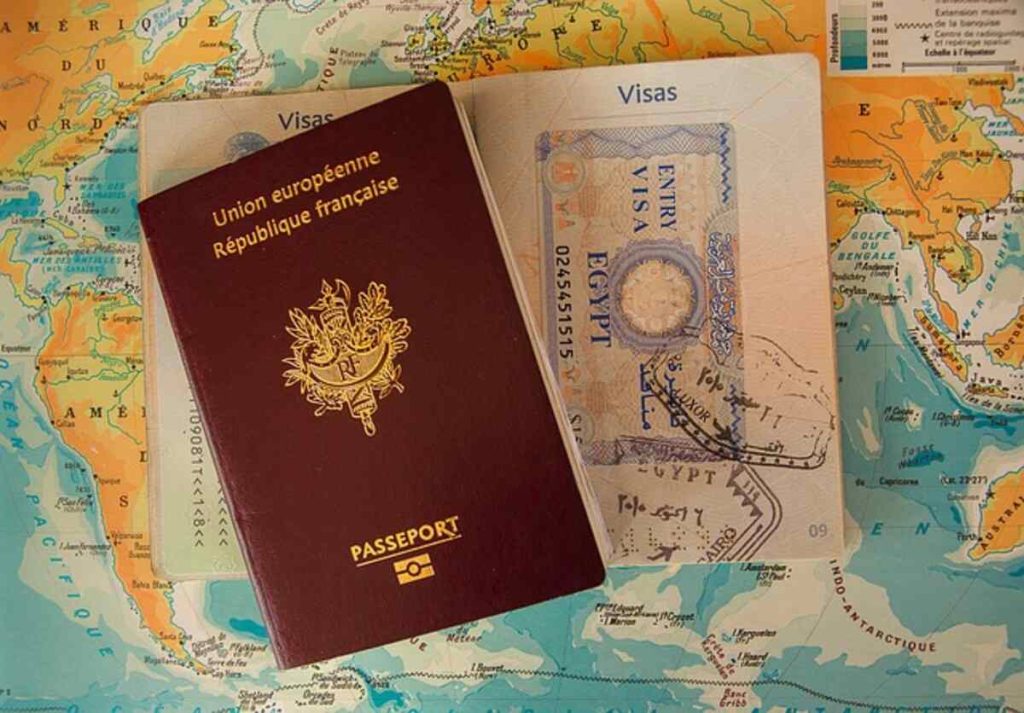Adjustment of Status (AOS) is when a foreign national already in the United States can change their immigration status to that of a lawful permanent resident (green card holder). AOS can be pursued by various categories of immigrants, including fiancé(e)s of U.S. citizens. Here’s an overview of the AOS for fiancé(e)s:
- Eligibility:
- The U.S. citizen petitioner must file Form I-129F (Petition for Alien Fiancé(e)) with U.S. Citizenship and Immigration Services (USCIS) to establish the intent to marry their foreign fiancé(e) within 90 days of their arrival in the U.S.
- The fiancé(e) must be outside the U.S. when the petition is filed and approved.
- Visa issuance:
- After USCIS approves the I-129F petition, it is sent to the U.S. Department of State’s National Visa Center (NVC).
- The foreign fiancé(e) will be instructed to complete additional forms and provide supporting documents to the U.S. Embassy or Consulate in their home country.
- The U.S. Embassy or Consulate will conduct a visa interview, and if approved, they will receive a K-1 visa.
- Entry into the U.S.:
- Once the K-1 visa is issued, the foreign fiancé(e) can enter the U.S. Within 90 days of entry, the couple must get married.
- Adjustment of Status:
- After the marriage, the foreign fiancé(e) can apply for AOS to become a lawful permanent resident.
- To apply for AOS, the following forms and supporting documents need to be submitted to USCIS:
- Form I-485 (Application to Register Permanent Residence or Adjust Status).
- Form I-864 (Affidavit of Support) to demonstrate the U.S. citizen’s financial ability to support the foreign spouse.
- Form I-765 (Application for Employment Authorization) if the foreign spouse wants to work while the AOS application is pending.
- Form I-131 (Application for Travel Document) if the foreign spouse needs to travel outside the U.S. while the AOS application is pending.
- Medical examination and vaccination records, as required by USCIS.
- Evidence of the bona fide marriage, such as wedding photos, joint financial records, and affidavits from friends and family.
- Biometrics and Interview:
- USCIS will schedule a biometrics appointment for the foreign spouse to provide fingerprints, photographs, and a signature.
- USCIS may also schedule an interview to assess the validity of the marriage and the eligibility for AOS.
- Green Card Approval:
- If the AOS application is approved, the foreign spouse will be granted conditional permanent resident status and receive a green card that is valid for two years.
- Removal of Conditions:
- Within the 90 days immediately before the second anniversary of obtaining conditional permanent resident status, the couple must file a joint petition (Form I-751) to remove the conditions on the green card.
- If the marriage is still valid, USCIS will grant the foreign spouse permanent resident status.
What to do after a K-1 visa is approved?
After a K-1 visa is approved, the foreign fiancé(e) is granted permission to enter the United States to marry their U.S. citizen petitioner. Here’s what to do after a K-1 visa is approved:
- Travel to the U.S.:
- The foreign fiancé(e) should receive their K-1 visa from the U.S. Embassy or Consulate in their home country. The visa will be stamped in their passport, allowing them to enter the U.S.
- Entry into the U.S.:
- The K-1 visa holder must enter the United States within the validity period of the visa, which is typically six months.
- Upon arrival in the U.S., the foreign fiancé(e) will be inspected by U.S. Customs and Border Protection (CBP) officers. It’s essential to have all the required documents, including the K-1 visa, a valid passport, and a sealed envelope containing the medical examination results.
- Marriage within 90 Days:
- The primary purpose of the K-1 visa is to allow the foreign fiancé(e) and the U.S. citizen petitioner to marry within 90 days of the foreign fiancé(e)’s arrival in the United States. Failure to match within this time frame could result in the foreign fiancé(e) being out of status.
- Apply for Adjustment of Status (AOS):
- After the marriage, the K-1 visa holder can apply for an Adjustment of Status (AOS) to become a lawful permanent resident (green card holder). This is a critical step in the process of obtaining permanent residency.
- The U.S. citizen petitioner should file Form I-485 (Application to Register Permanent Residence or Adjust Status) on behalf of the foreign spouse.
- Supporting documents, including Form I-864 (Affidavit of Support), Form I-765 (Application for Employment Authorization), Form I-131 (Application for Travel Document, if needed), medical examination records, and evidence of the bona fide marriage, should be submitted with the I-485 application.
- Biometrics and Interview:
- USCIS will schedule a biometrics appointment for the foreign spouse to provide fingerprints, photographs, and a signature.
- USCIS may also schedule an interview to assess the validity of the marriage and the eligibility for AOS. The U.S. citizen petitioner and the foreign spouse will typically need to attend this interview.
- Receive Temporary Work Authorization (Optional):
- While the AOS application is pending, the foreign spouse can apply for an Employment Authorization Document (EAD) by filing Form I-765. Once the EAD is approved, they can legally work in the United States.
- Receive a Travel Document (Optional):
- If the foreign spouse needs to travel outside the U.S. while the AOS application is pending, they can apply for a Travel Document (Advance Parole) by filing Form I-131.
- Receive Conditional Permanent Residency:
- If the AOS application is approved, the foreign spouse will be granted conditional permanent resident status, and they will receive a green card valid for two years.
- Removal of Conditions:
- Within the 90 days immediately before the second anniversary of obtaining conditional permanent resident status, the couple must file a joint petition (Form I-751) to remove the conditions on the green card.
- Transition to Permanent Green Card:
- If the marriage is still valid, USCIS will grant the foreign spouse a permanent green card, which is typically valid for ten years.



